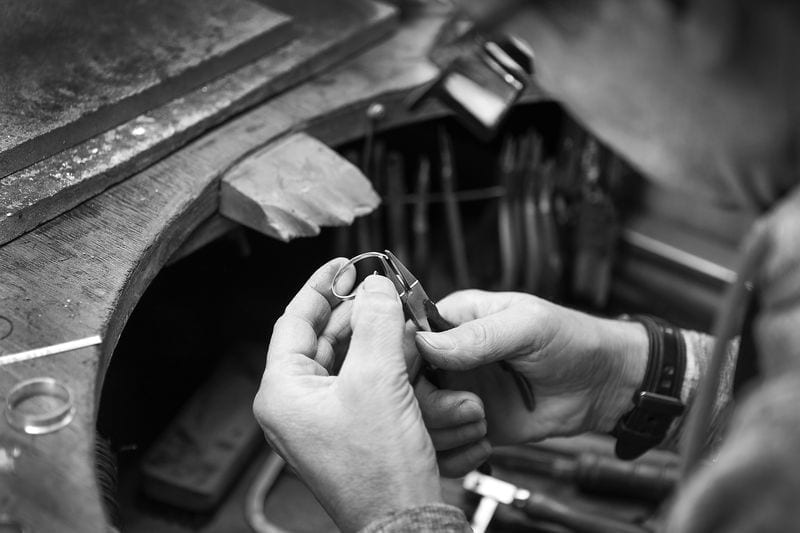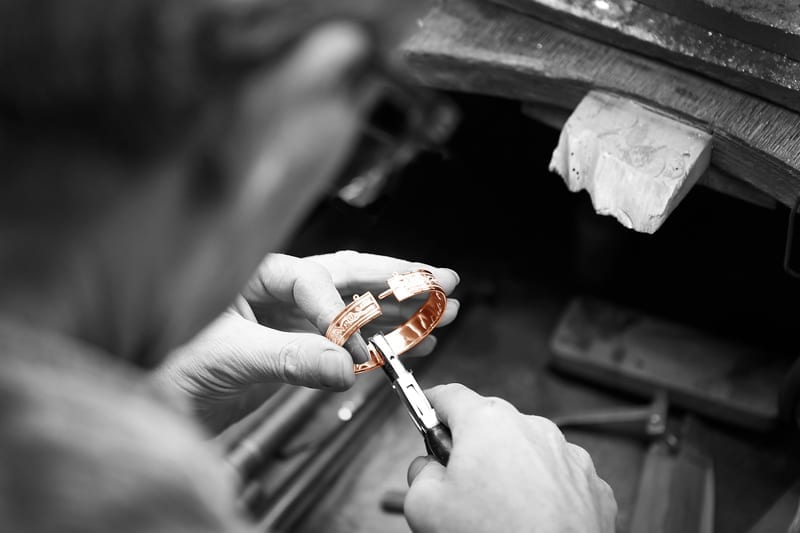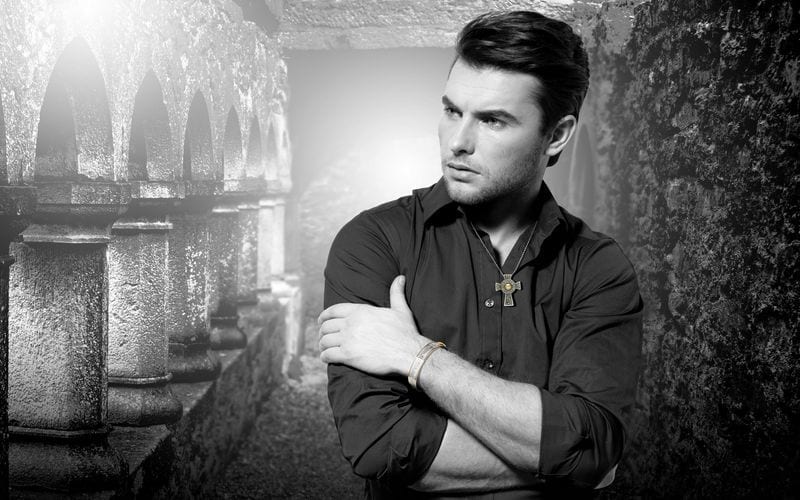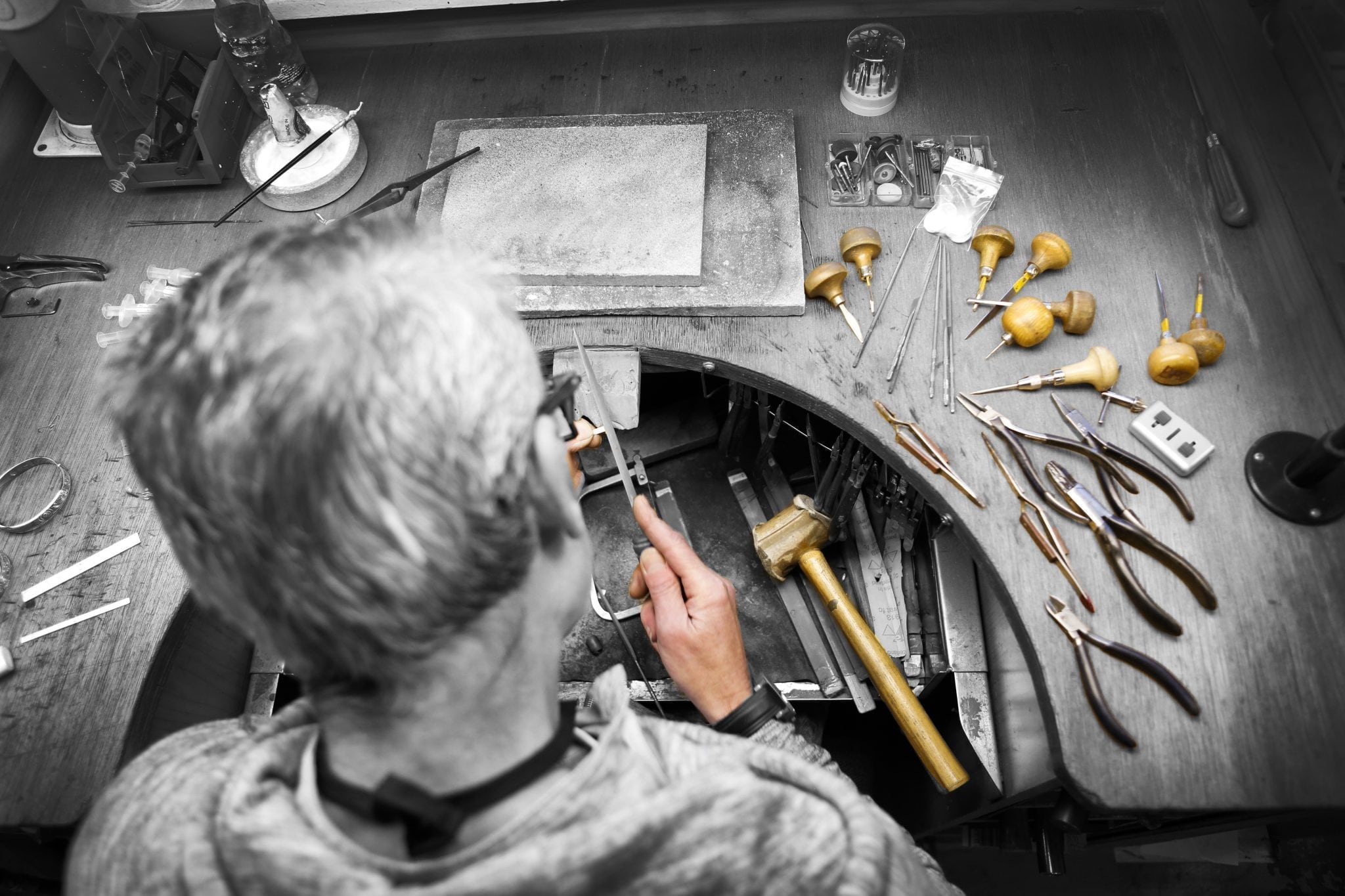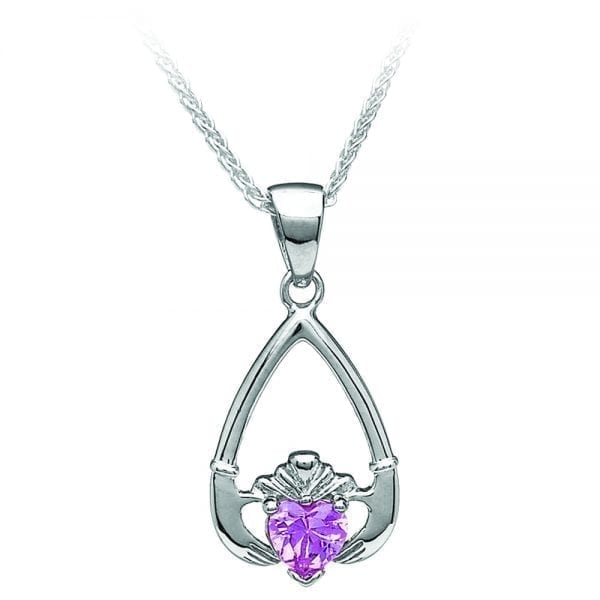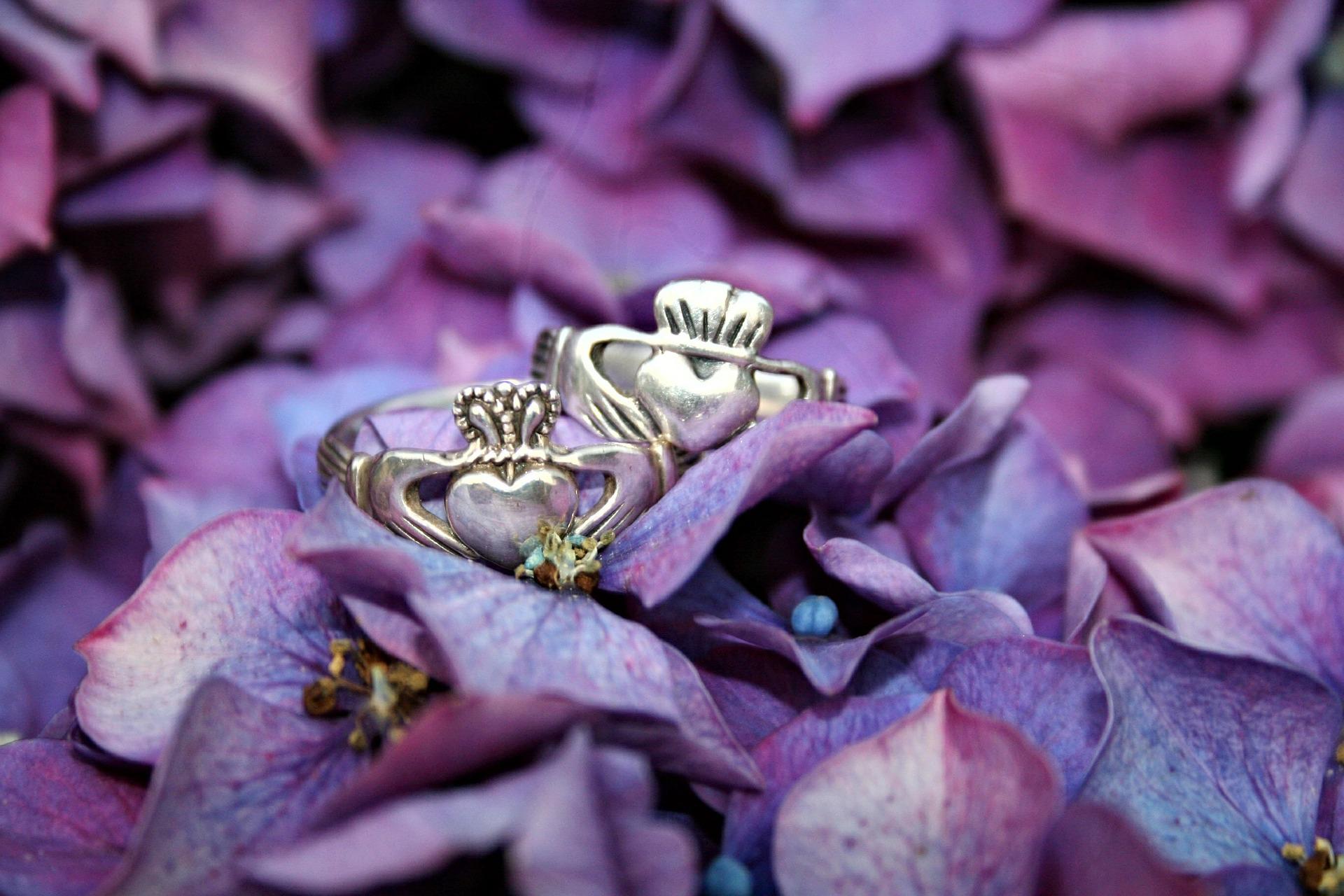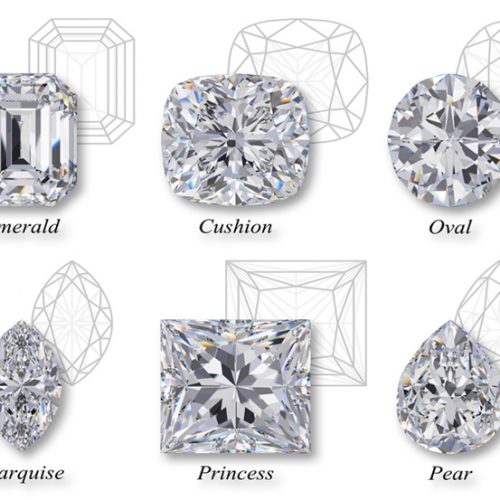

How to choose a diamond
Diamond is the only precious stone made of a single element, carbon, which represents 99.95% of its composition, the remaining 0.05% consisting of trace elements that do not contribute to the overall chemistry of a diamond. The gem is so durable and hard, that the only way to scratch one is with another diamond.
These unique gemstones form under special conditions, deep beneath the Earth’s surface, under high pressure and extreme temperatures. Being so rare and precious, they have been appreciated for centuries, even though knowledge about their formation and how they are transported to the Earth’s surface is relatively recent. The interest in researching the ways diamonds can be obtained is equally recent, as of 50 years ago.
- Why are diamonds so precious
- Pros and cons of lab grown diamonds
- How to choose a diamond according to its features
- Choosing a conflict-free diamond
- Other criteria you should take into account when choosing a diamond
Why are diamonds so precious
Diamond is the hardest naturally occurring substance and the most popular gemstone, being the first and most frequent choice for many jewelry options whether they adorn an engagement ring, a pendant or a bracelet. Also, due to its extreme hardness, it has a large number of industrial applications.
As a general rule, precious stones are very rare and their unique structure holds a high economic value. Diamonds, being in essence a form of carbon element, with atoms naturally styled in a crystal-type structure, are considered rare gems, since they formed billion years ago and only a small amount survived and surfaced the earth. Their amazing properties, the durability and optical brilliance originate in the arrangement of the carbon atoms in their composition.
Before choosing a diamond, it is important to be acquainted with its properties, symbolism and value, so that the chosen piece will meet your criteria. Ideally, you will have a diamond buying guide at your disposal, with detailed information about:
- its origins
- the extraction method
- the value it carries in terms of carats and cuts.
Picking a diamond is no easy task, as there are various criteria that need to be taken into consideration. Their brilliance and hardness make them a unique gem in the realm of precious stones. They can be found only in special conditions, in 3 different types of deposits, outspread all around the world, and are weighed in carats and in points, which establish their market value.
Deciding upon the perfect diamond that suits the occasion and the person wearing it depends on the shape and the quality of the gem, but also on your budget.

Pros and cons of lab grown diamonds
Lab-grown diamonds, also known as engineered or cultured diamonds, are produced in laboratory environments that mimic the natural conditions under which natural diamonds develop beneath the Earth’s crust, in the mantle. The technology of producing lab-grown diamonds consists of arranging actual carbon atoms in the same configuration as the natural diamond structure. They bear the same characteristics as natural diamonds, and they can be distinguished from them by an expert only, with the help of high-tech machines. The differences between natural and lab-grown diamonds are not visible to the naked eye.
The pros of lab-grown diamonds
- They are 100% conflict-free and cruelty-free and their production does not harm the environment, since it takes less water to create them in a lab;
- Lab-grown diamonds are approximately 40% cheaper than natural ones, according to clarity, color and size;
- Since they have the same atomic configuration as natural diamonds, they became very popular and accessible;
- Because of the high demand for affordable diamonds, labs developed their technologies to offer diamonds as close to natural ones as possible, so the differences in aspect are unnoticeable.
The cons of lab-grown diamonds
- Natural diamonds are becoming a scarce resource, therefore buyers turn to lab-grown ones that don’t have supply issues. However, that means their resale value will decrease gradually;
- Production of lab-grown diamonds demands an enormous amount of energy in order to simulate natural conditions:
- When it comes to sustainability, diamond mines emit lower levels of carbon dioxide than diamond labs.
How to choose a diamond according to its features
Representing love and being the birthstone for the month of April, the diamond is the result of enormous pressure and heat from the Earth’s core that transforms carbon into the most cherished gemstone. Diamonds, however, do not form identically and it takes an experienced eye to spot the perfect diamond jewelry, whether you are on the look-out for a necklace, a pair of earrings or an engagement ring.
In addition to the high-quality stones, the market is also invaded by industrial ones, since synthetic diamonds have been produced on a large commercial scale since 1960. Synthetic diamonds are fabricated in labs that mimic the conditions they naturally undergo when forming beneath the Earth’s crust. The origin is the main factor that separates the original diamonds from the synthetic ones, since both types have essentially the same chemical composition, crystal structure and optical properties.
When looking for a diamond, one should be aware of its characteristics, so that the choice is the right one and the diamond selected meets all the criteria of a natural gemstone. First and foremost, we should take into consideration “the Four Cs”: Color, Clarity, Cut and Carat, as well as the size and shape of the stone.
Color of a diamond
The majority of diamonds have a slight tint, usually yellow. Perfectly colorless diamonds are extremely rare and extremely expensive. Diamonds are rated according to their color on a scale, starting at D, which is completely colorless, to J, which stands for nearly colorless. If a diamond is rated J, this does not mean that it is flawed. Sometimes, slightly tinted diamonds are preferred, because they have an interesting brilliance, whereas the colorless diamonds sometimes appear icy blue.
Black diamonds are among the most popular colors of diamonds. In recent years, the popularity of unconventional engagement rings rose, and as a result, the demand for these beautiful gems grew. There are several types of black diamonds available on the market: natural (also called Carbonados), treated and man-made. Natural black diamonds owe their color to the high graphite presence in their composition.
Clarity of a diamond
Clarity represents the number of flaws that are found inside the diamond, when examined under a professional magnifier. Flawless diamonds give an unparalleled brilliance, whilst those that are flawed appear more matte. Clarity is rated on the IF scale (internally flawless):
- VVS1-VVS2 (very, very slightly included)
- VS1-VS2 (very slightly included)
- S1-S2 (slightly included).
The flaws inside the diamond structure are not visible to the naked eye, therefore an expert is needed to establish its clarity. The truly flawless diamonds, which are rated F, are very rare and the cost reflects that.
Cut of a diamond
The most important factor for a diamond’s level of attractiveness is the way it is cut. Cutting to proportion is the criteria to establish if a diamond is rated “ideal” or “excellent”. The craftsmanship of the cutter may even help disguise flaws in a diamond, such as the yellowish color or a lower quality. A poorly cut diamond will not give away as much brilliance as a well cut one, because the rays of light are not broken and reflected back as with a perfectly cut diamond.
Carat weight of a diamond
Carat refers to the weight of a diamond. One carat equals 0.2 grams, and as the weight increases, so is the price of the diamond. When determining what to look for in a diamond, it is important to keep in mind that quality prevails over size, especially when choosing a diamond engagement ring. This is due to the fact that the more carats a diamond has, the more likely it is for its flaws to be apparent, such as the yellow color or the lack of clarity. Carat weight of a diamond also relates to the cut: a well-cut diamond may seem larger than its actual weight, due to its sparkle or “fire”.
Size of a diamond
The diamond size chart helps determine the right carat weight of a diamond, by providing a mm to carat comparison. The chart is a reference point, as diameters of diamonds vary, based on the quality of the cut. Diamonds are measured with a professional dial or digital display gauge, that allows the right evaluation of the diameter and depth of loose diamonds. The diamond measurement instrument allows the accurate reading of the millimeter size of the diamond.
Shape of a diamond
The diamond shape refers to its geometric appearance. Considering this criteria, diamonds are separated into two groups: round diamonds and diamonds of other shapes. Round diamonds are also referred to as round brilliant cuts and are the most traditional diamond shape. The other shapes refer to all other techniques: princess-cut, cushion shape, emerald shape, oval, pear, marquise or heart-shaped diamonds.

Choosing a conflict-free diamond
Natural diamonds are found in 3 types of deposits:
- Alluvial gravels
- Glacial till
- Kimberlite pipes
The kimberlite pipes, such as those in Kimberley, South Africa, form from the surfacing of magma into the Earth’s crust and deliver minerals, rocks and diamonds from the mantle. The diamonds found in these deposits formed 1 to 3.3 billion years ago, at depths of 120 km. Diamonds need to be mined from the deposits, a hard and exhausting work, requiring not only special tools and machines, but also specialized man-power.
Conflict-free diamonds are those processed by companies that are not connected to rebel groups and that do not finance civil wars in the countries or regions they’re established. There are numerous routines, agreements and international procedures, such as the Kimberley Process, to guarantee that diamonds are mined and shipped according to ethical standards.
The Kimberley Process Certification Scheme was drafted by the United Nations, in partnership with the diamond industry and 70 other countries, after the war in Sierra Leone and the conflicts on African territories. The Kimberley Process sets out rules and regulations to ensure that diamonds are extracted and handled in observance of human rights, safe working conditions, fair pay for workers in the industry and also environmentally sound practices.
The rules and regulations set out in the Kimberley Process establish that diamonds were mined, shipped and cut in ethical conditions, without posing threats to the environment. Each diamond receives a Kimberley Process certificate, verifying that it is conflict-free. Since its adoption, the number of conflict diamonds and associated crimes decreased considerably worldwide.
Diamonds that come from unknown sources or do not observe the Kimberley Protocol are referred to as “blood diamonds” or “conflict diamonds”. They originate from war-torn countries or areas and are illegally traded on the black market.
“Conflict-free” or “cruelty-free” diamonds are mined following all the rules and protocols of safety and labor. When you purchase a conflict-free diamond, you know that it was extracted without violating human rights or harming the environment.

Other criteria you should take into account when choosing a diamond
Diamonds vary from clear and colorless to black and they may also be opaque, transparent or translucent. Colorless or pale blue stones are the most valuable, but are extremely rare, as most gems are tinged with yellow. Diamonds that are currently on the market have a distinct color: those that are red, green or blue are rare; whilst orange, yellow and violet are more common.
Industrial or synthetic diamonds are mostly brown or grey and are either opaque or translucent. The color of the stones may vary and be changed due to exposure to intense radiation or heat treatment.
If you are looking for a diamond engagement ring or a special piece of jewelry, for yourself or to offer it as a gift, it is recommended that you seek an expert opinion. A professional assessor has all the valuable data and precise instruments to evaluate the diamond.
The budget is also an aspect to be taken into consideration. Diamonds are a token of love, through their symbolism and the rarity of this precious stone. Hence, buying such a gem can also be regarded as an investment: the market value of diamonds is stable and the carat size, along with the quality of the cut are key factors that can lead to the increase of their worth over time.
Diamond jewelry is chosen according to the occasion and the person it is gifted to. There are no limitations when it comes to offering a precious gem such as a diamond. It is suitable for a fiancé, a best friend, a mother or somebody you wish to show appreciation to. Diamonds adorn a large array of jewelry pieces, from cufflinks and bracelets, to rings and pendants.
A well-cut and beautifully shaped diamond makes the perfect engagement ring. A properly cut stone will return a greater amount of brilliance and will reflect the light in interesting angles and shades. The high dispersion of light gives the diamonds their sparkle, which is caused by the separation of white light into the colors of the spectrum, as it passes through the stone.

Precious and delicate, yet durable and with an unparalleled hardness among natural gems, diamonds have been wielding their fascination over us ever since they surfaced from the depths of Earth’s core. Coming in many shapes, weights, colors and cuts, diamonds make the perfect gift for anyone who appreciates their uniqueness and billion-years old journey.



